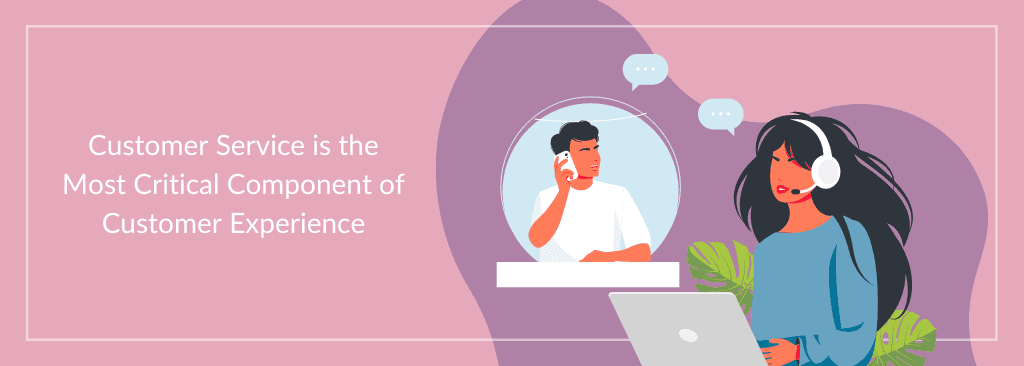Customer Service Is the Most Critical Component of Customer Experience
Most people interchangeably use customer experience and customer service to mean the same.
Let us take a moment to different the two of them.
Customer experience is everything related to a business – advertisements that I watch about them, the perception that I have, purchase experience, experience in using their product and service, continuing engagement, and the service they provide.
According to Annette Franz, founder, and CEO of CX Journey, “Customer Experience is the sum of all the customer interactions that a customer has with an organization over the life of the relationship with that company or with that brand.”
Customer Service Kicks in When the Customer Experience Breaks Down
For instance, you order a product online, and the provider delivers a defective product – the experience breaks down here.
Now, you request a return, and the carrier never visits you to pick up the defective product – the experience breaks down further.
After a few communication exchanges back and forth, you arrange for the defective product to be picked up, and the provider does not process the refund – the experience breaks down even further.
You can handle each of these touchpoints differently, which is what customer service does. They ensure that your experience with the brand is better than what I have described here.
Defective product delivery is an oversight, most likely. Once the customer asks for a return, the customer service would intervene and deliver a new set before picking up the defective one.
If the customer asks for a refund, they would arrange for a pick up of the defective product and process the payment immediately.
Customer service would always err in favor of the customer.
Issues Happen Despite the Best Efforts
According to a Zendesk study, 50% of customers will switch to a competitor after one bad experience. In the case of more than one bad experience, that number increases to a whopping 80%.
How Do You Improve Customer Experiences?
It is an ongoing, iterative process, and you keep improving your customer experience strategies to ensure happy customers.
Even before figuring out how to improve your customer experience strategies, let us look at what does providing a positive experience might include:
- Setting realistic expectations about the product or service
- Fantastic UI making it intuitive
- Self-help resources in the form of videos, manuals, and FAQs
- Proactive messaging around known issues
- Transparent pricing that includes the cost of the product, implementation, and maintenance
- Always available live customer service with short waits
Now, you get the drift on what it takes to provide a positive customer experience.
Your customer service people are on the frontline. They would be the first ones to know about any expectation-experience gaps, the usability, and adoption challenges with the product, and commonly asked questions that can go as a part of the FAQ, self-help videos, and the manuals.
Their inputs can enhance the customer experiences in an ongoing manner. Seek customer service agents’ feedback on what your customers expect. They are the frontline of customer service, and they would see opportunities invisible to people who don’t have their feet on the ground.
Your customer service agent’s experience sets the tone for your customer experiences. Seek their feedback positively, and try to incorporate the suggestions as a part of your customer experience process.
Keep your agents updated about your organization’s goals and plans for the future. Let them be an inclusive part of your goals and plans.
When your agents feel that they have a voice in the customer experience operations, they will feel empowered. An empowered customer service agent will help seal the customer experience gaps.
